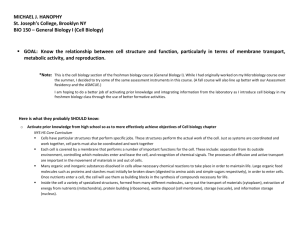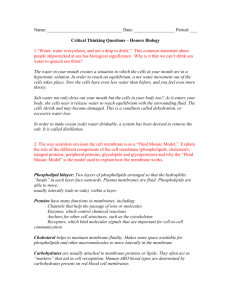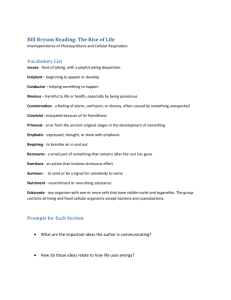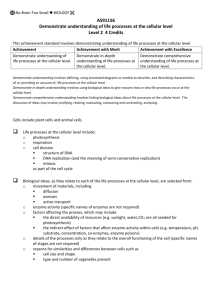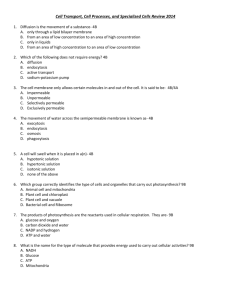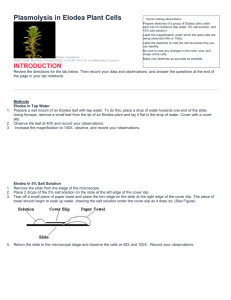7-5 Cellular Organization Objectives and Focus Questions Theme
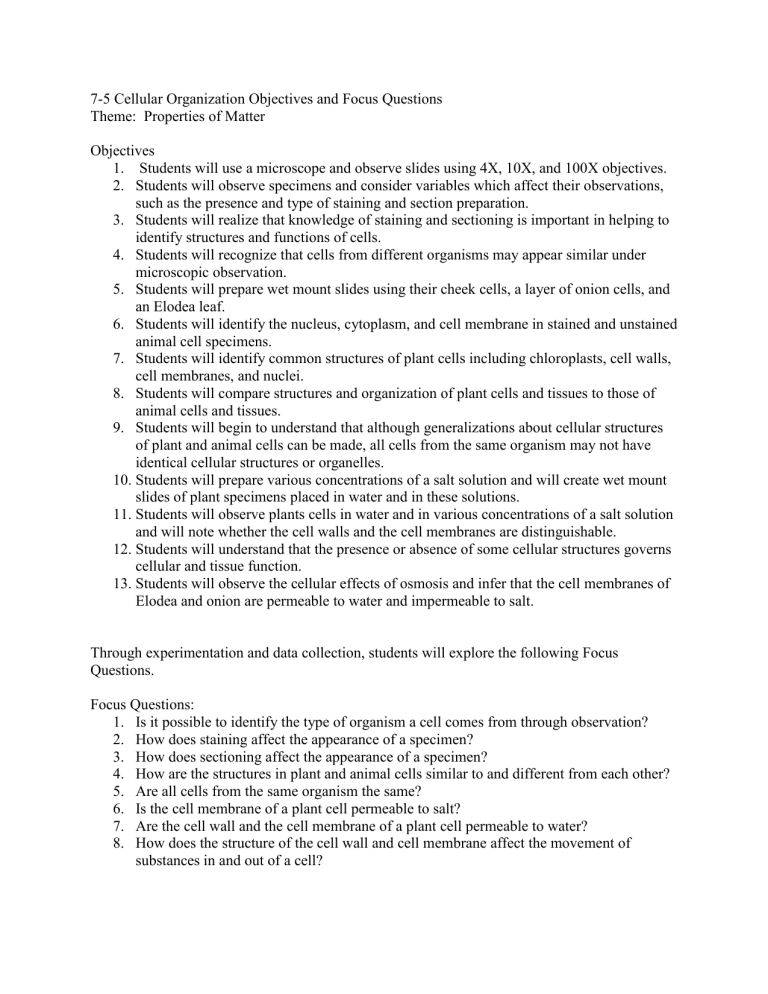
7-5 Cellular Organization Objectives and Focus Questions
Theme: Properties of Matter
Objectives
1.
Students will use a microscope and observe slides using 4X, 10X, and 100X objectives.
2.
Students will observe specimens and consider variables which affect their observations, such as the presence and type of staining and section preparation.
3.
Students will realize that knowledge of staining and sectioning is important in helping to identify structures and functions of cells.
4.
Students will recognize that cells from different organisms may appear similar under microscopic observation.
5.
Students will prepare wet mount slides using their cheek cells, a layer of onion cells, and an Elodea leaf.
6.
Students will identify the nucleus, cytoplasm, and cell membrane in stained and unstained animal cell specimens.
7.
Students will identify common structures of plant cells including chloroplasts, cell walls, cell membranes, and nuclei.
8.
Students will compare structures and organization of plant cells and tissues to those of animal cells and tissues.
9.
Students will begin to understand that although generalizations about cellular structures of plant and animal cells can be made, all cells from the same organism may not have identical cellular structures or organelles.
10.
Students will prepare various concentrations of a salt solution and will create wet mount slides of plant specimens placed in water and in these solutions.
11.
Students will observe plants cells in water and in various concentrations of a salt solution and will note whether the cell walls and the cell membranes are distinguishable.
12.
Students will understand that the presence or absence of some cellular structures governs cellular and tissue function.
13.
Students will observe the cellular effects of osmosis and infer that the cell membranes of
Elodea and onion are permeable to water and impermeable to salt.
Through experimentation and data collection, students will explore the following Focus
Questions.
Focus Questions:
1.
Is it possible to identify the type of organism a cell comes from through observation?
2.
How does staining affect the appearance of a specimen?
3.
How does sectioning affect the appearance of a specimen?
4.
How are the structures in plant and animal cells similar to and different from each other?
5.
Are all cells from the same organism the same?
6.
Is the cell membrane of a plant cell permeable to salt?
7.
Are the cell wall and the cell membrane of a plant cell permeable to water?
8.
How does the structure of the cell wall and cell membrane affect the movement of substances in and out of a cell?


